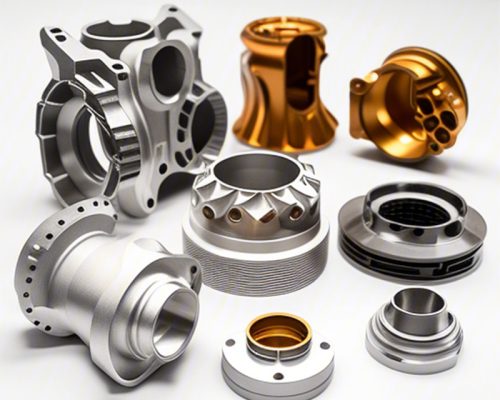When choosing between 304 and 440C stainless steel for CNC machining, precision often becomes a critical factor. But what makes one better suited than the other for your specific needs? As an industry expert, I’ve worked extensively with both materials, and today, I’ll share insights into their machining properties, challenges, and applications.
If you’ve ever wondered why a project with 440C might demand more attention—or why 304 is often preferred for certain finishes—this guide will answer your questions and help you make an informed decision.
Understanding 304 and 440C Stainless Steel
Before diving into their CNC machining characteristics, let’s get a clear idea of what sets 304 and 440C apart.
304 Stainless Steel
- Composition: 18% chromium, 8% nickel, with traces of carbon and manganese.
- Key Features:
- Highly resistant to corrosion.
- Excellent for welding and forming.
- Softer and more ductile compared to 440C.
- Common Uses: Kitchen appliances, chemical containers, architectural components.
440C Stainless Steel
- Composition: High carbon content with 16-18% chromium.
- Key Features:
- Exceptional hardness and wear resistance.
- Superior tensile strength.
- Less corrosion-resistant compared to 304.
- Common Uses: Cutting tools, bearings, surgical instruments.
Why This Matters for CNC Machining
The distinct properties of these materials influence machining precision in different ways. Let’s look at how each performs under a CNC machine.
CNC Machining Precision: 304 Stainless Steel
Advantages:
- Easier to Machine: 304’s ductility and lower hardness mean tools wear down slower, leading to more consistent results over longer runs.
- Surface Finish: Its softer nature allows for smoother finishes with minimal secondary polishing.
- Tolerance Control: Better adaptability for tight tolerances in intricate designs.
Challenges:
- Gummy Nature: Tends to stick to cutting tools, leading to possible chatter if not properly lubricated.
- Heat Sensitivity: Prolonged machining can cause slight distortions due to thermal expansion.
Pro Tip: Always use sharp tools and apply proper coolant to maintain precision during machining.
CNC Machining Precision: 440C Stainless Steel
Advantages:
- Hardness: The high hardness ensures that critical components retain their dimensions even under stress.
- Durability: Excellent for parts requiring longevity, particularly in abrasive environments.
- Dimensional Stability: Ideal for applications needing ultra-precise tolerances that won’t degrade over time.
Challenges:
- Tool Wear: Its hardness and toughness can wear out cutting tools faster.
- Brittleness: Unlike 304, 440C’s lower ductility makes it prone to chipping during machining.
- Higher Costs: Processing time and tool maintenance increase operational costs.
Pro Tip: Use carbide tools for machining 440C and adopt slower feed rates to minimize tool wear and enhance precision.
Key Comparisons Between 304 and 440C for CNC Machining
| Feature | 304 Stainless Steel | 440C Stainless Steel |
|---|---|---|
| Machinability | Easier; less wear on tools | More challenging; tool wear is high |
| Tolerance Capability | Good for tight tolerances | Excellent for ultra-precise tolerances |
| Corrosion Resistance | Outstanding | Moderate; can rust over time if not treated |
| Surface Finish | Smooth and shiny | May require more post-processing |
| Cost Efficiency | Lower tooling costs | Higher costs due to wear and longer machining times |
Choosing the Right Material for Your CNC Project
The choice between 304 and 440C ultimately depends on your project’s priorities:
- Choose 304 Stainless Steel if:
- Corrosion resistance is crucial.
- You need a smoother finish with minimal effort.
- Cost and ease of machining are top concerns.
- Choose 440C Stainless Steel if:
- Hardness and wear resistance are critical.
- Dimensional stability over time is essential.
- The part will endure high mechanical stresses.
Practical Tips for Machining Both Materials
- Tool Selection: Use carbide or coated tools for 440C to enhance durability, while high-speed steel works well for 304.
- Cutting Speeds: Keep speeds moderate for 440C to reduce tool wear; higher speeds are safe for 304 with proper cooling.
- Coolants: Essential for both materials to prevent overheating and improve surface finish.
- Regular Maintenance: Check tools frequently to avoid inconsistencies in machining quality.
Final Thoughts
CNC machining precision for 304 and 440C stainless steels comes down to balancing material properties with project requirements. Each material brings unique advantages and challenges to the table.
Have you worked with either 304 or 440C stainless steel in your projects? What challenges did you face? Let me know in the comments—I’d love to share more tips or address your concerns!
Remember, choosing the right material isn’t just about the specs; it’s about understanding how it aligns with your specific application. Let’s make your next CNC machining project a success!



